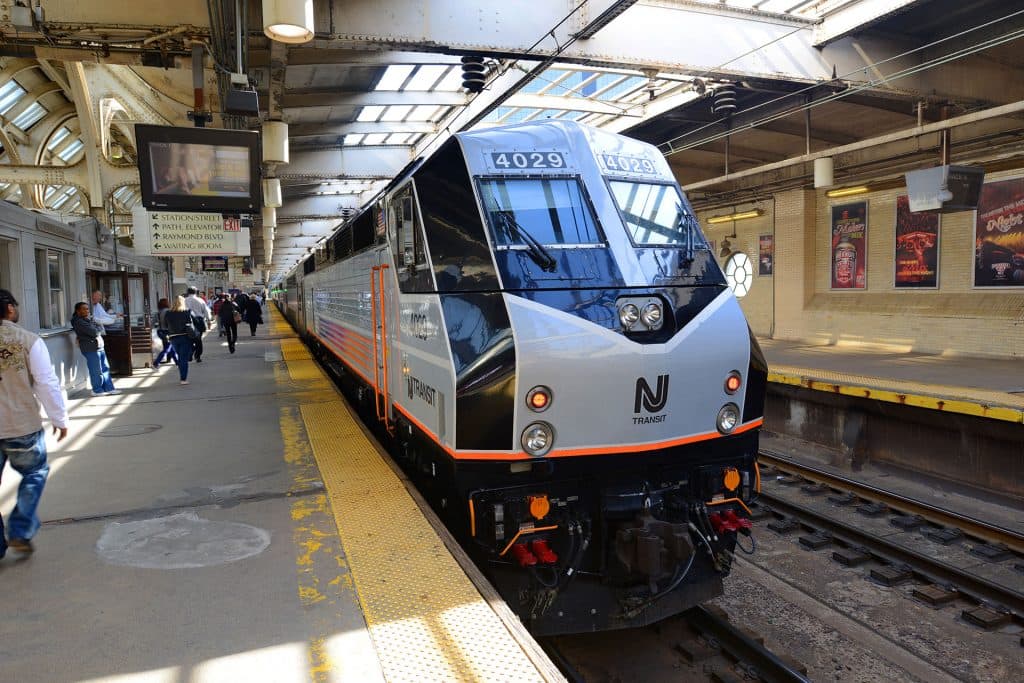
The Gateway Program is one of the largest infrastructure projects planned in the United States, on the New York City to Newark, New Jersey portion of the nation’s busiest rail line. This strategic project will double train traffic from 24 to 48 trains per hour, and is necessary to pave the way for additional high-speed service.
Local administrations, the states of New York and New Jersey, and the rail companies Amtrak and NJ Transit Rail Operations that manage the line are joining forces. Their goal: partly to modernize and partly to rebuild a section of the Northeast Corridor (NEC), the railway line used by millions of people to reach the Big Apple.
The last step forward was made in June, when the governments of the states of New York and New Jersey set up the Gateway Development Commission to carry out the project for a planned investment of more than $15 billion.
The new Commission (made up of 3 members for each state and an Amtrak representative) will also be able to collect the necessary federal funds, although to date there has been no official reassurance that the Trump Administration will finance the work, even if only in part.
The project is strategic for the region, and commuters have been waiting for years for authorities to modernize this line. Amtrack has said parts of the line are now obsolete and unable to meet the intense demands of New York City’s ever-growing mobility.
Gateway Program: about the project
The Gateway Program calls for an upgrade of the transport network along a 10-mile (16 km) part of the Northeast Corridor, and specifically the stretch that connects Newark New Jersey with Pennsylvania Station in New York City. This rail route has suffered weather damage, particularly from Hurricane Sandy in 2012, and portions of it are over 100 years old, creating delays.
The two most significant works are the Portal Bridge and the Hudson Tunnel (also known as the North River Tunnel that runs below the river).

The construction of the Portal Bridge
The Portal Bridge was built in 1910 for the railway line crossing the Hackensack River between Secaucus and Kearney, New Jersey. Slow speeds across the aging bridge create a bottleneck across the system and it must be replaced to cope with the heavier rail traffic. Therefore the Gateway Program has ranked it as one of its most important projects. The new Portal Bridge will increase transit capacity by 11%. The project has already been approved and construction on one new span, Portal Bridge North, started in 2017, but the new bridge’s full potential will only be exploited when the corridor’s other strategic project — the tunnel under the Hudson — is completed.
The North River Tunnel
One of the project’s biggest challenges is the reconstruction of the North River Tunnel, the railway tunnel that runs under the Hudson River that was badly damaged in 2012 by Hurricane Sandy.
The tunnel was built at the same time as the Portal Bridge, over 100 years ago, and provides daily crossing for around 450 trains and 200,000 passengers. But its functionality is now at risk because of its age, and in 2014 Amtrak published a study warning that the infrastructure can be used for no more than 20 more years.
The Gateway Program calls for it to be rebuilt even though, to date, only New York and New Jersey state governments seem willing to invest the necessary financial resources, while the federal government has declined to do so.
A new tunnel has a strategic value for the city of New York and the entire surrounding area. About 13% of people working in Manhattan live in New Jersey and contribute $33 billion to the city’s wealth production. But the tunnel is not only important for the Big Apple. Its modernization would reduce delays on the entire Northeast Corridor, the busiest rail link in the US.
The Northeast Corridor
The implementation of the Gateway Program is deeply connected with the development and efficiency of the Northeast Corridor, carrying 800,000 passengers each day.The line, which extends from Washington D.C. to Boston, crosses nine states where 17% of the American population lives and where 97 of the 500 largest companies in the world have their headquarters, according to Forbes. This area is so important that it alone produces 20% of US GDP.
The Gateway Program therefore is the “last mile” of a strategic work for the city of New York and for the entire East Coast.

